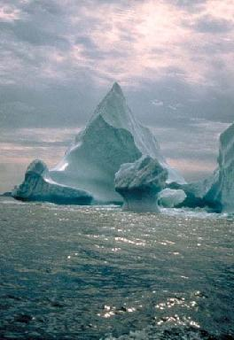NOAA/WDS Paleoclimatology - Tropical Indian Ocean carbonate during the past 1.5 Ma
This archived Paleoclimatology Study is available from the NOAA National Centers for Environmental Information (NCEI), under the World Data Service (WDS) for Paleoclimatology. The associated NCEI study type is Paleoceanography. The data include parameters of paleoceanography with a geographic location of Indian Ocean. The time period coverage is from Unavailable begin date to Unavailable end date in calendar years before present (BP). See metadata information for parameter and study location details. Please cite this study when using the data.
- Cite as: Bassinot, F.C.; Beaufort, L.; Vincent, E.; Labeyrie, L.D.; Rostek, F.; Müller, P.J.; Quidelleur, X.; Lancelot, Y. (1995-10-01): NOAA/WDS Paleoclimatology - Tropical Indian Ocean carbonate during the past 1.5 Ma. [indicate subset used]. NOAA National Centers for Environmental Information. https://doi.org/10.25921/j3vj-pj20. Accessed [date].
- Please refer to Credit tab for full citation information.
- doi:10.25921/j3vj-pj20
- noaa-ocean-2518
- NCEI DSI 1200_02
- NCEI DSI 1200_01
noaa-ocean-2518
| Search Data |
|
| Download Data |
|
| Distribution Formats |
|
| Ordering Instructions | Contact NCEI for other distribution options and instructions. |
| Distributor | NOAA National Centers for Environmental Information
ncei.info@noaa.gov |
| Dataset Point of Contact | NOAA National Centers for Environmental Information
ncei.info@noaa.gov |
| Dataset Point of Contact | Data Center Contact
NOAA World Data Service for Paleoclimatology 828-271-4800 paleo@noaa.gov |
| Coverage Description | Paleo date information not available. |
| Time Period | 1950 to Present |
| Spatial Bounding Box Coordinates |
N: 5.05
S: 5.05
E: 73.88
W: 73.88
|
| Spatial Coverage Map | |
| General Documentation |
|
| Associated Resources |
|
| Publication Dates |
|
| Data Presentation Form | Digital table - digital representation of facts or figures systematically displayed, especially in columns
|
| Dataset Progress Status | Complete - production of the data has been completed |
| Data Update Frequency | Data update frequency not available |
| Supplemental Information |
ABSTRACT SUPPLIED BY ORIGINATOR: We examined coarse fraction contents of pelagic carbonates deposited between 2000-and 3700-m water depth in the tropical Indian Ocean using Ocean Drilling Program (ODP) sites 722 (Owen Ridge, Arabian Sea) and 758 (Ninetyeast Ridge, eastern equatorial Indian Ocean), and four giant piston cores collected by the French R/V Marion Dufresne during the SEYMAMA expedition. Over the last 1500 kyr, coarse fraction records display high-amplitude oscillations with an irregular wavelength on the order of ∼500 kyr. These oscillations can be correlated throughout the entire equatorial Indian Ocean, from the Seychelles area eastward to the Ninetyeast Ridge, and into the Arabian Sea. Changes in grain size mainly result from changes in carbonate dissolution as evidenced by the positive relationship between coarse fraction content and a foraminiferal preservation index based on test fragmentation. The well-known “mid-Bruhes dissolution cycle”represents the last part of this irregular long-term dissolution oscillation. The origin of this long-term oscillation is still poorly understood. Our observations suggest that it is not a true cycle (it has an irregular wavelength) and we propose that it may result from long-term changes in Ca++flux to the ocean. Sites 722 and 758 δ18O records provide a high-resolution stratigraphy that allows a detailed intersite comparison of the two coarse fraction records over the last 1500 kyr. Site 722 (2030 m) lies above the present and late Pleistocene lysocline. The lysocline shoaled to the position of site 758 (2925 m) only during the interglacial intervals that occurred between about 300 and 500 ka (Peterson and Prell, 1985a). Despite these supralysoclinal positions of the two sites, short-term changes in coarse fraction contents are correctable from one site to another and probably result from regional (or global) dissolution pulses. By stacking the normalized coarse fraction records from sites 722 and 758, we constructed a Composite Coarse Fraction Index (CCFI) curve in which most of the local signals cancelled out. The last 800 kyr of this curve appear to compare extremely well with the Composite Dissolution Index curve from core V34-53 (Ninetyeast Ridge), which unambiguously records past variations of carbonate dissolution in the equatorial Indian Ocean (Peterson and Prell, 1985a). In the late Pleistocene the CCFI variations are mainly associated with glacial-interglacial changes. They show strong 100 and 41 kyr periodicities but no clear precession-related periodicities. As proposed earlier by Peterson and Prell (1985a), the lack of precession frequencies may suggest that the regional carbonate dissolution signal is driven by changes in deepwater circulation. We cannot totally reject the possibility, however, that low temporal resolution and/or bioturbation degrade somehow the precessional signal at ODP sites 722 and 758. In contrast, spectral density of dissolution cycles in the giant (53 m long) piston core MD900963 (Maldives area) displays clear maxima centered on the precession frequencies (23 and 19 kyr−1) as well as on the kyr−1 frequency but shows little power at the 100- kyr−1 frequency. These high-frequency changes most probably result from changes in surface productivity associated with monsoon variability. Dissolution at this site may be ultimately controlled by the oxidation of organic matter which appears to be incorporated into the sediments in greater quantity during periods of weak SW monsoon and/or increased dry NE monsoon.
|
| Purpose | Records of past climate and ocean circulation derived from marine sediments. Parameter keywords describe what was measured in this dataset. Additional summary information can be found in the abstracts of papers listed in the dataset citations. |
| Dataset Citation |
|
| Cited Authors |
|
| Originators |
|
| Publishers |
|
| Theme keywords | Global Change Master Directory (GCMD) Science Keywords
|
| Data Center keywords | Global Change Master Directory (GCMD) Data Center Keywords
|
| Place keywords |
|
| Use Constraints |
|
| Access Constraints |
|
| Fees |
|
Last Modified: 2024-04-03
For questions about the information on this page, please email: ncei.info@noaa.gov
